Magento 2 Backend Exploration: Categories
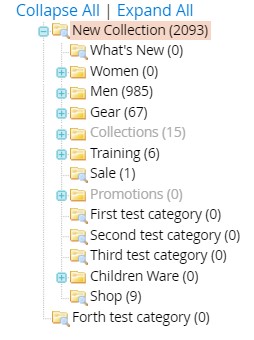
We’ve already described the main sections of Admin->Sales (Orders, Invoices, Credit Memos, etc.) as well as the Products screen available under the Catalog section. Now, we continue the exploration of Catalog. In the article below, you will find a detailed description of the Categories screen, including a guide on how to add new categories, as well as import and export them. This tutorial is suitable for both Magento 2 Commerce and Open Source.

Table of contents
Magento 2 Categories Screen
You can find the Categories screen under Catalog-> Categories.
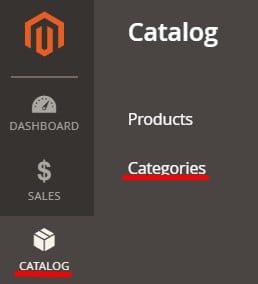
Control elements
The Categories screen doesn’t offer the standard control elements which are usually available on other Magento 2 admin screens.
Instead of them, there is a category tree on the left with buttons to add a new category or subcategory. You can also collapse or expand all categories.
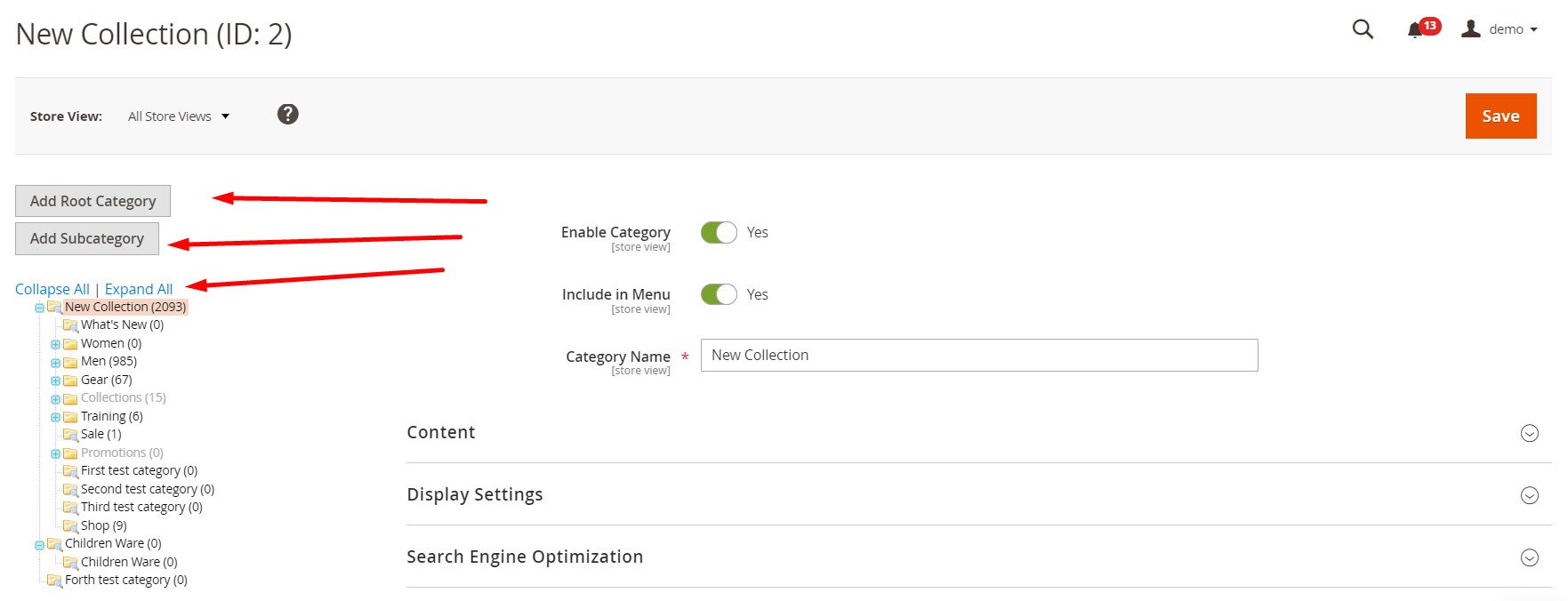
You can also switch between store views from the section above the tree. After applying changes, hit the “Save” button. If you need a category ID, it is displayed along with a category name above on the left.

How to edit a category in Magento 2
Now, let’s find out how to change a category in Magento 2. First of all, you have to select it from the category tree. You will see all the related settings on the right.
The first section lets you enable/disable the selected category. Besides, you can include/exclude it from the menu. Edit the category name here.

The Content tab lets you upload a category image or select it from the gallery. You can also edit a product description here as well as show/hide a CMS block.
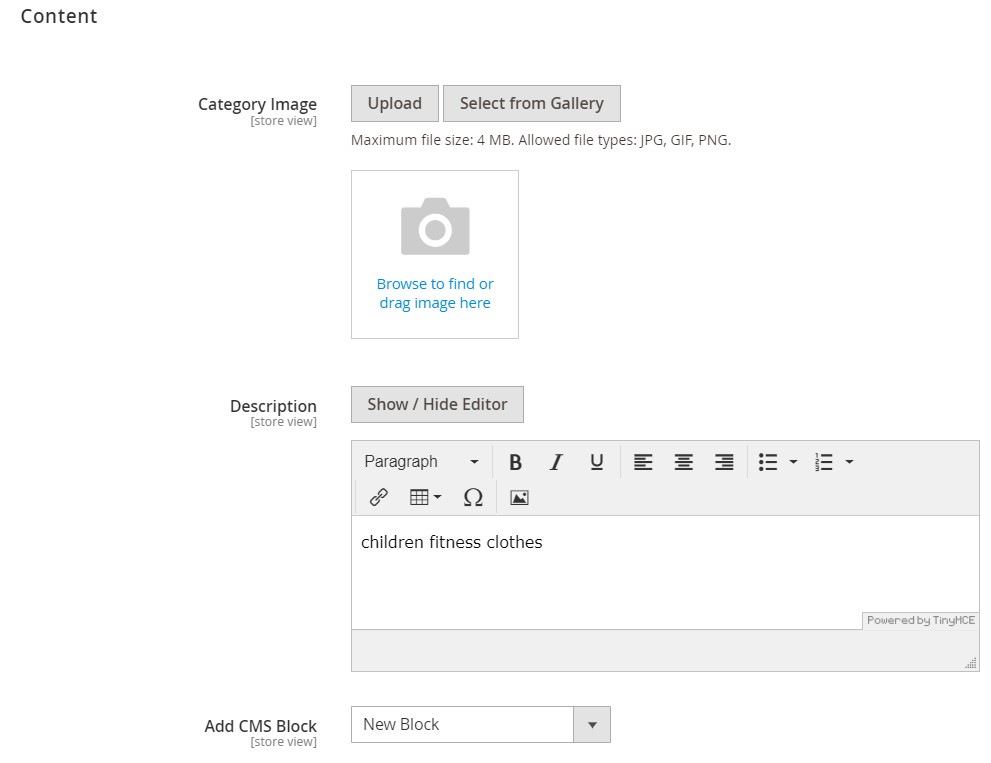
In Display Settings, you can switch between different display modes, enable/disable Anchor, choose how to sort products, and configure a layered navigation price step.
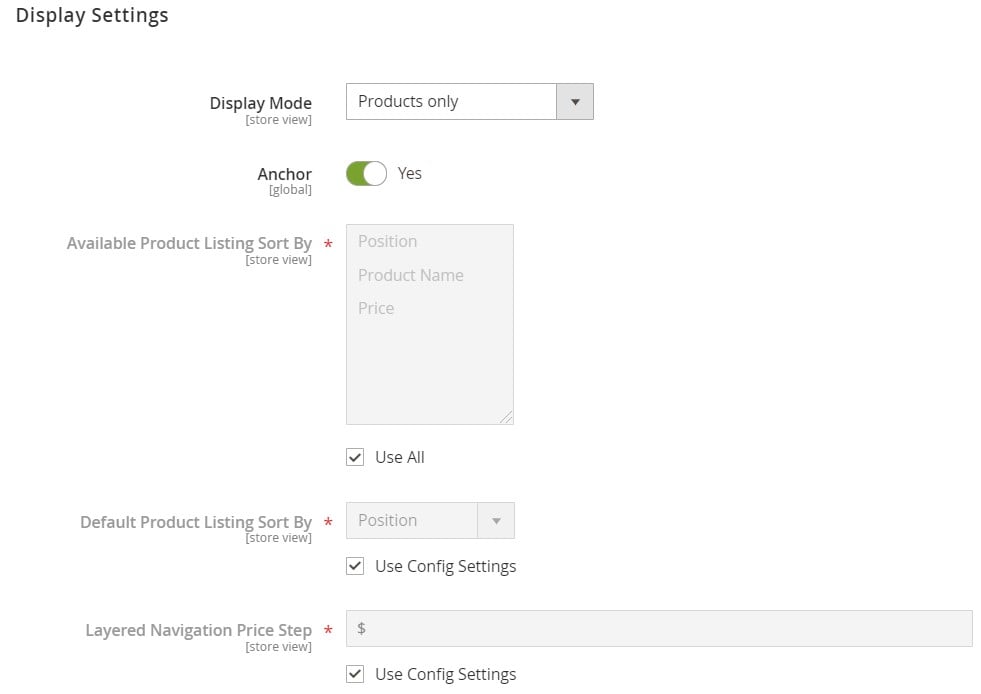
The SEO section offers standard fields for meta title, keywords, and description.
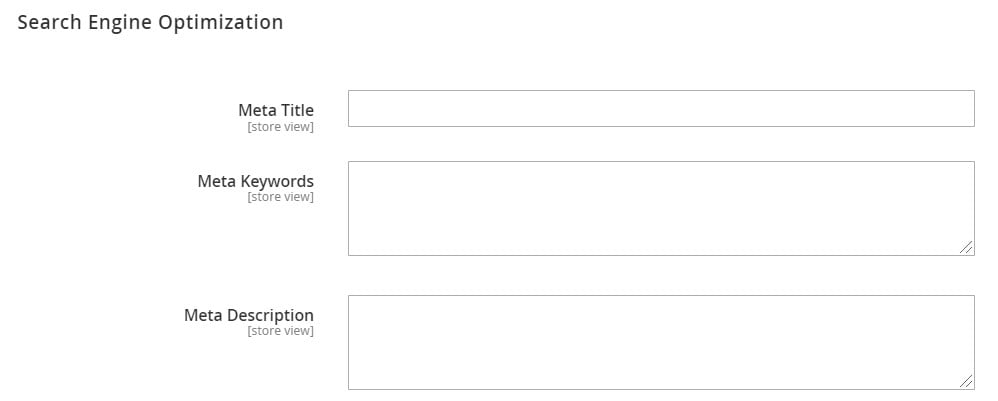
The Products in Category section lets you choose what products to show. You can specify the position of each one. To find a particular product, use filters available under column names.
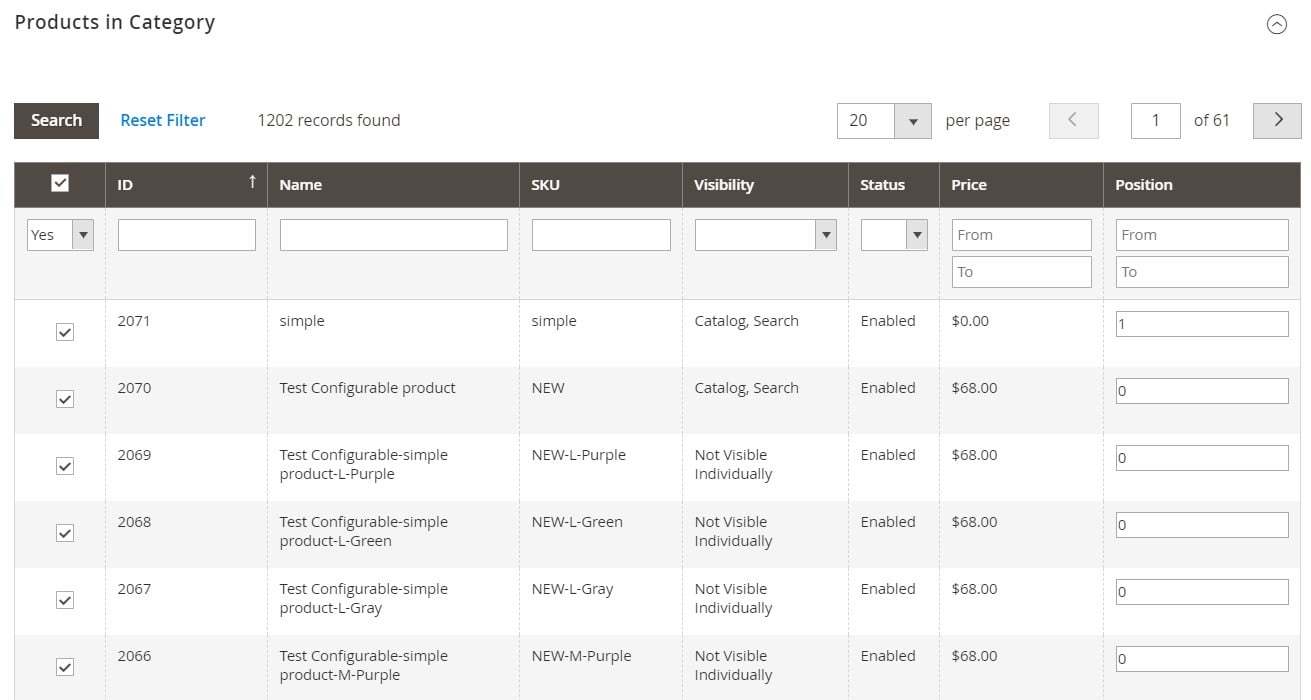
In the Design section, you can apply parent category settings or select a new theme and layout (layout update XML can be added here). It is also possible to share the category’s design with its products.
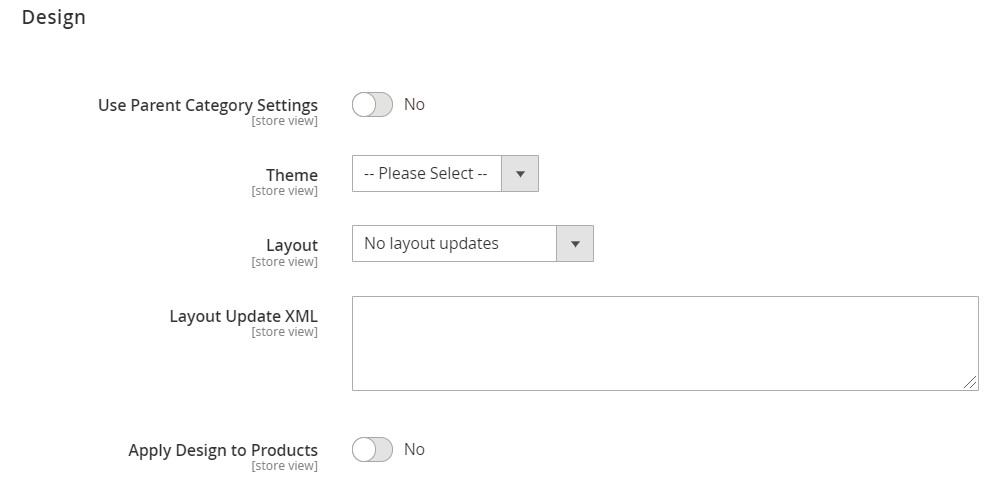
You can schedule the configured design update for any period. Just use the last section, “Schedule Design Update.”

How to add a new category in Magento 2
To add a new root category in Magento 2, hit the appropriate button above the category tree.
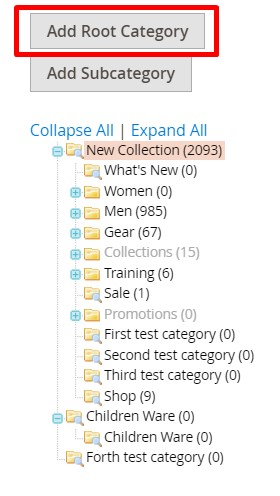
The same settings that we’ve just described above are available here. Specify the name of your new root category and configure other parameters.
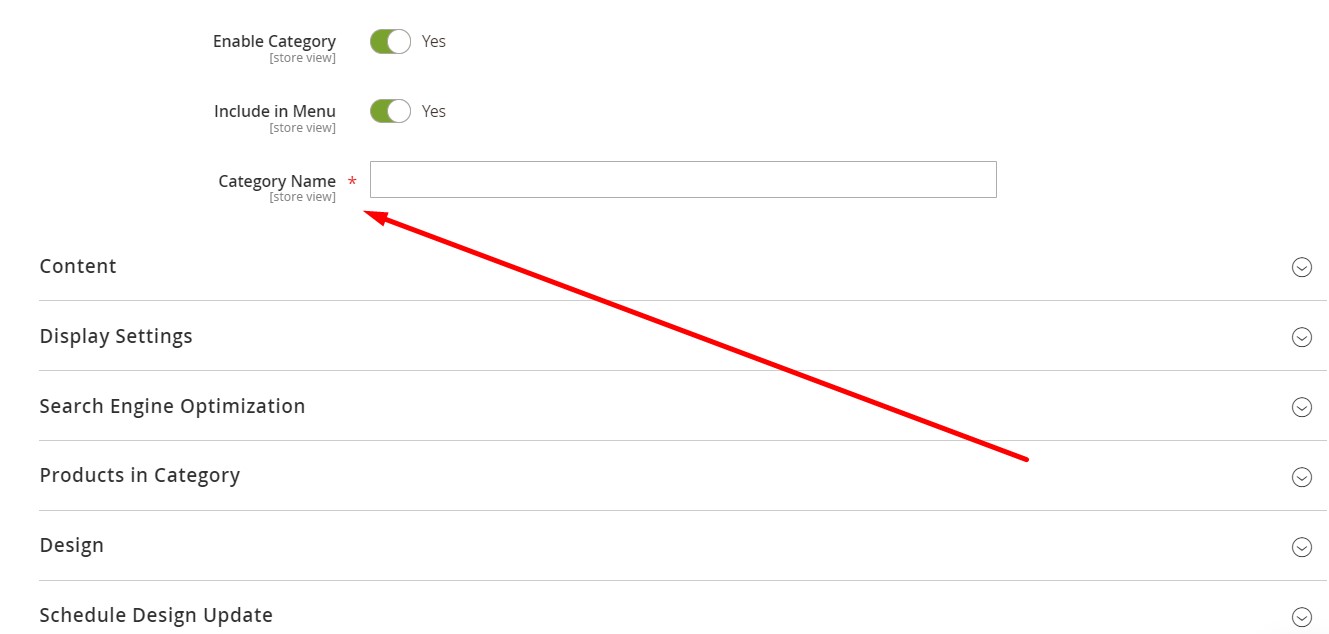
To add a new subcategory in Magento 2, use another button – “Add Subcategory.”
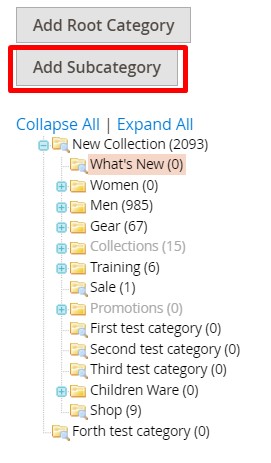
Next, configure all the corresponding parameters. Note that they are similar to ones we’ve already mentioned.
How to Import Categories to Magento 2
To import categories to Magento 2 quickly and automatically, we recommend you to use the Improved Import & Export Magento 2 extension. This module not only simplifies the default product import dramatically but also lets you transfer all the related data from any external platform. Let’s explore a situation when you have to migrate from your old Magento 1 website to a brand new Magento 2 store. Create an export file with categories on your old site. Next, transfer it to a server or a dropbox account. Then, follow these steps:
Go to System->Improved Import/Export->Import Jobs and hit the “Add New Job” button.
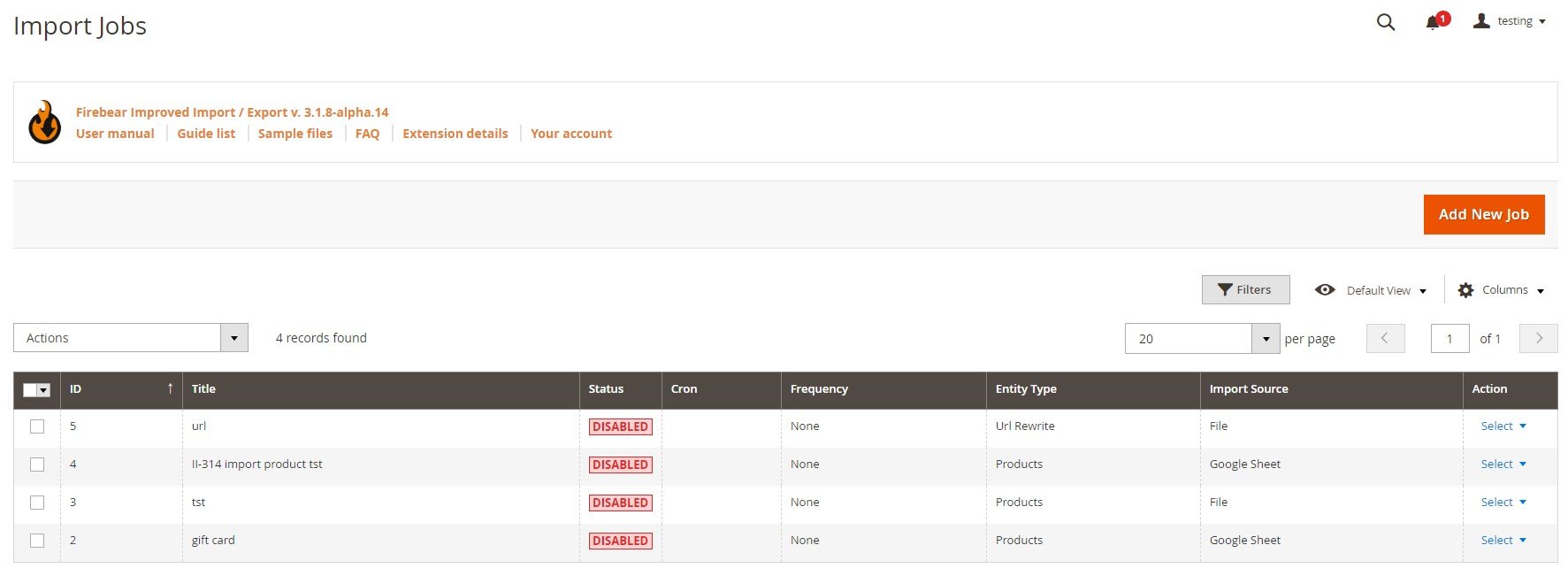
In General Settings, enable the job, specify its title, choose the manual run frequency (we are transferring data from your old store, so it is a one-time procedure), select a language (locale), and enable/disable the following features depending on your business needs:
- Generate Unique Url if Duplicate;
- Re-Index after Import;
- Send email from new tracks.
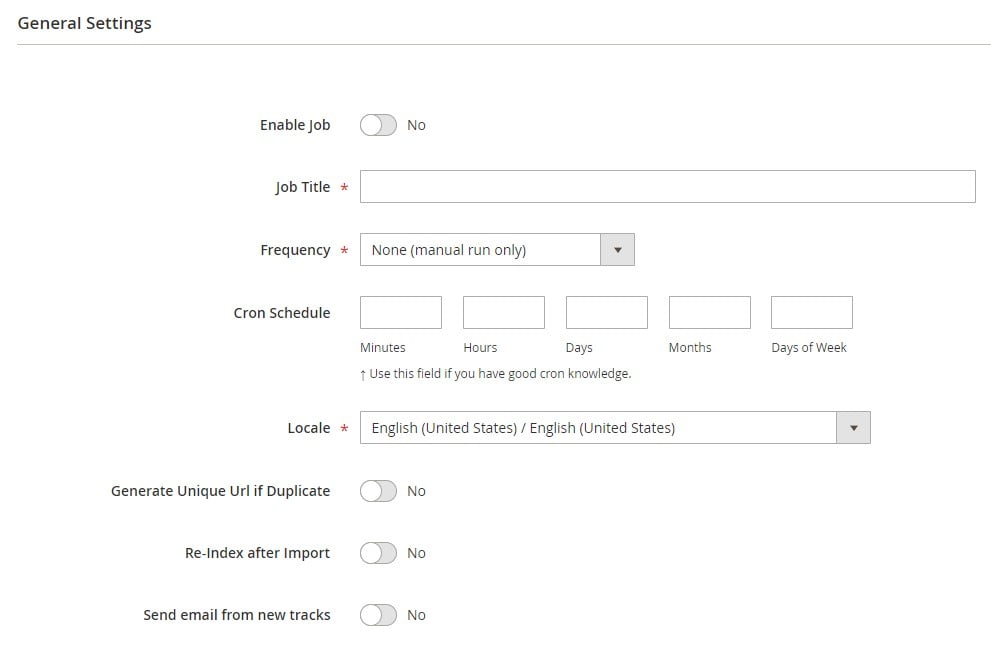
In Import Settings, disable API (if you are going to transfer categories via CSV from your old Magento 1 website), choose Categories in the Entity dropdown, and select a platform (Magento 1). You can also remove up-sell and cross-sell products.

In Import Behavior, select Add/Update from the dropdown, choose a validation strategy, specify the maximum possible number of errors, and type separators.
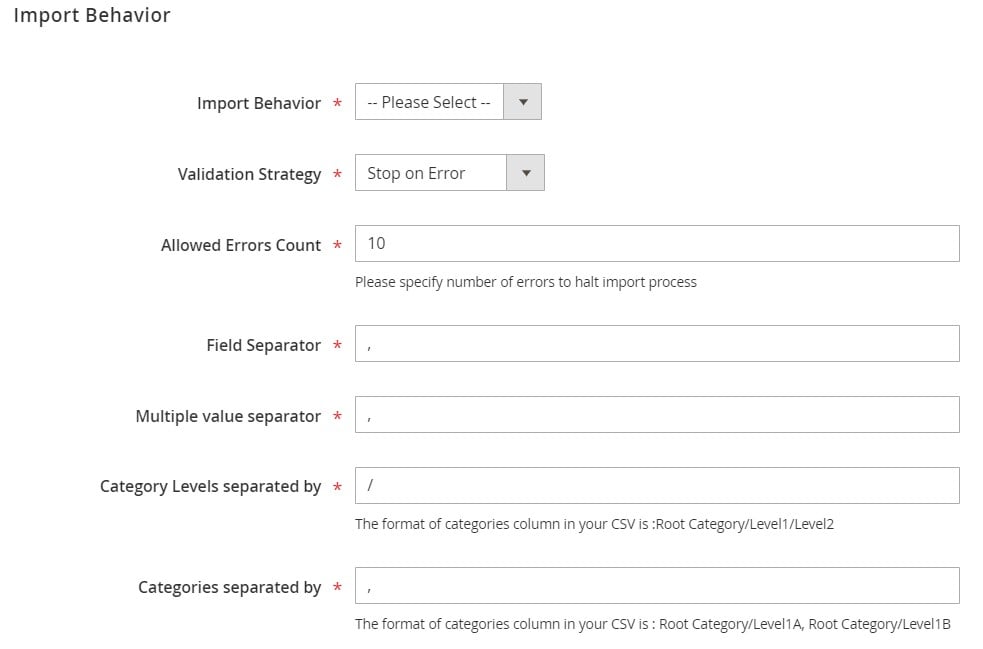
In Import Source, select CSV as your import file type (or choose another standard if your data file is not CSV). Next, specify your import source. You can import a data file with products to Magento 2 from a server, Dropbox account, URL, or upload it directly. In the case of Dropbox, specify a file path, access token, and remote images directory. Enable/disable the following features depending on your business needs:
- Use Image Import Source;
- Do you want to remove current mappings?
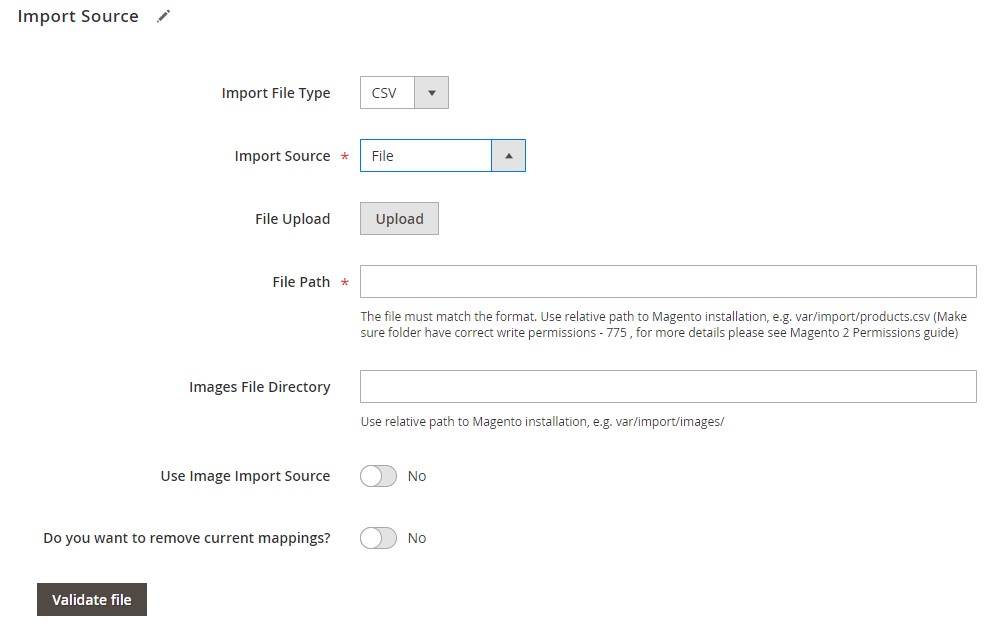
To start the category import process, hit “Save & Run” in the top right corner of the screen. For further information about how to import categories to Magento 2, follow the link below and contact our support:
Get Improved Import & Export Magento 2 Extension
How to Export Categories from Magento 2
To export categories from Magento 2, we recommend you to use the Improved Import & Export Magento 2 extension as well. This module not only automates the default category export but also lets you transfer all the related data to any external system without modifying anything manually. Let’s see how to provide an external system with categories daily. Follow these steps to achieve your goal:
Go to System->Improved Import/Export->Export Jobs and hit the “Add New Job” button.
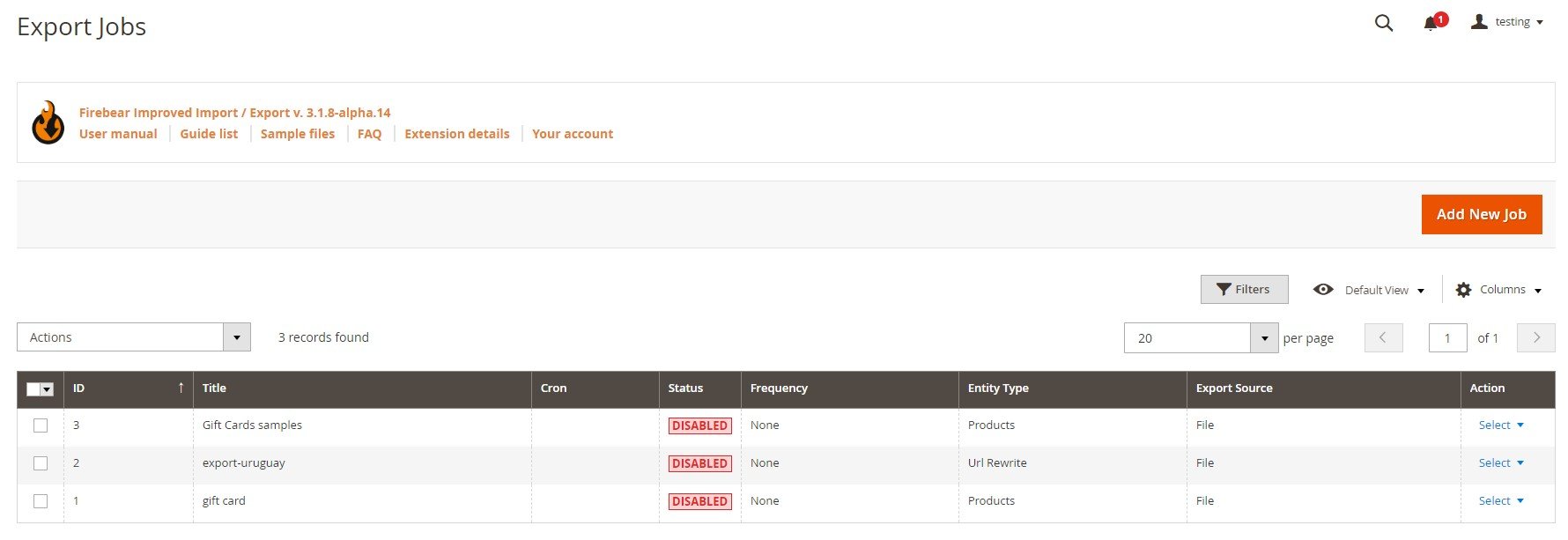
The General Settings section lets you enable the job, type its title, and select a frequency (every day at 3:00 am). Choose a local file language and divide additional attributes if necessary.
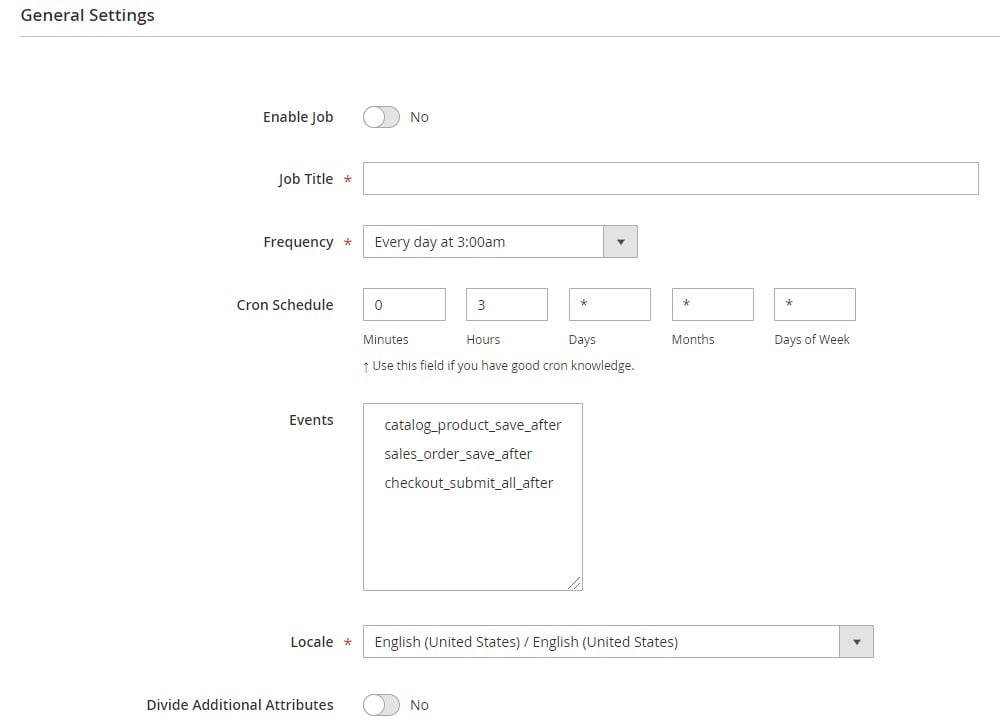
In Export Settings, select Categories from the Entity dropdown and enable Consecutive Export.
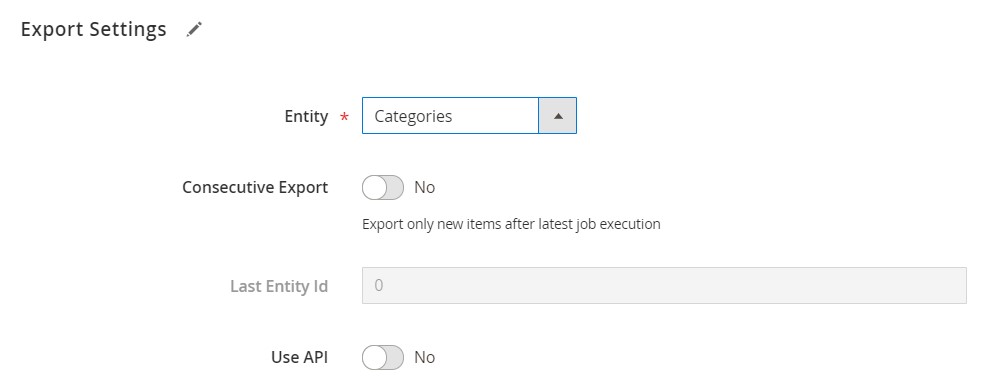
In the Store Filter section, select store views to export categories from.
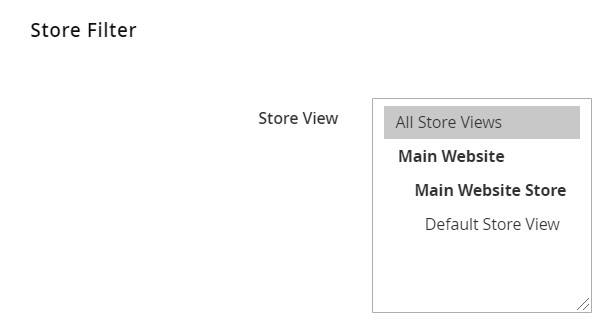
In Export Behavior, select a format of your categories export file (your ERP system should support this format) and specify separators.
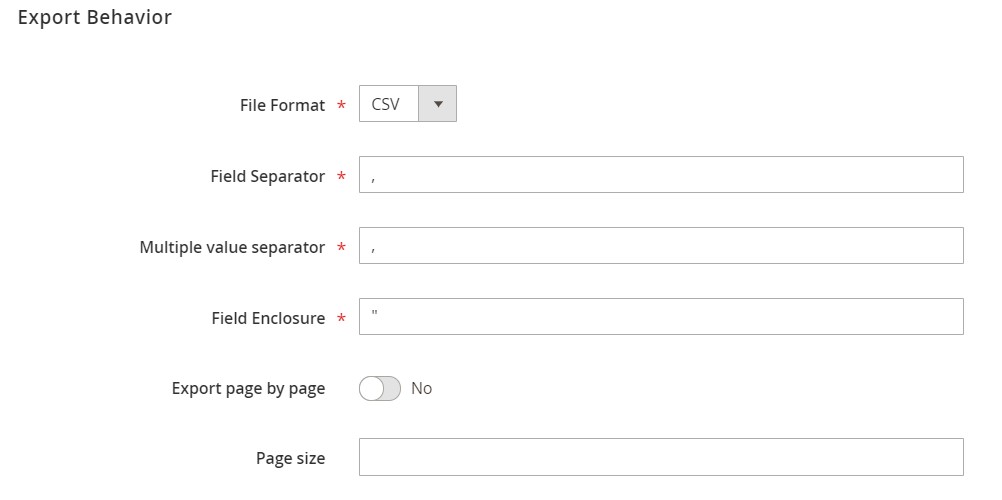
In Export source, specify where your categories should be transferred to. You can select FTP, SFTP, or a data file as a destination. Check the connection before going any further.
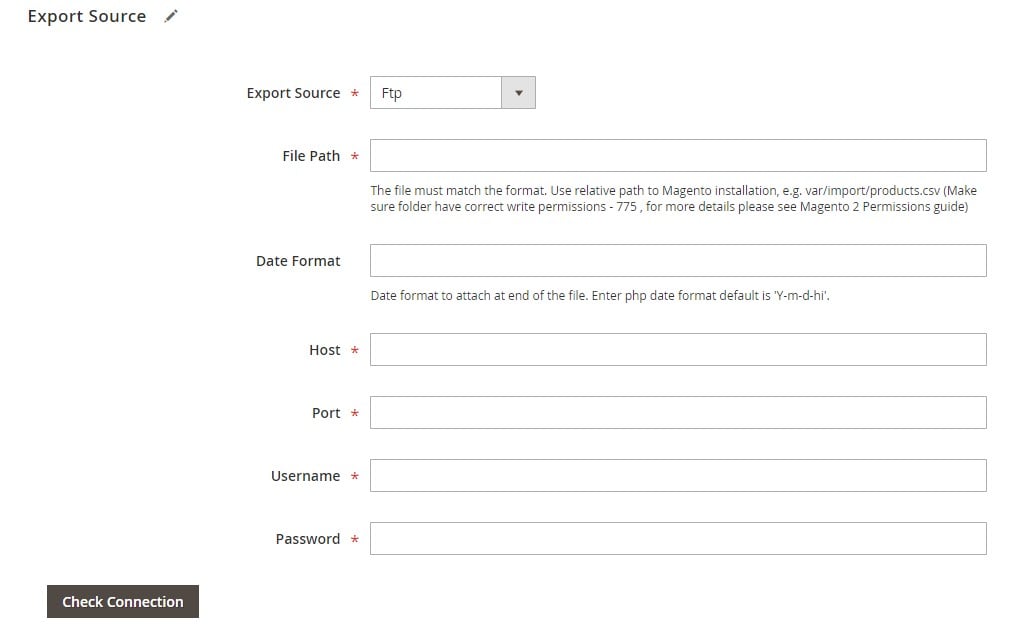
Next, you can map attributes and add filters.
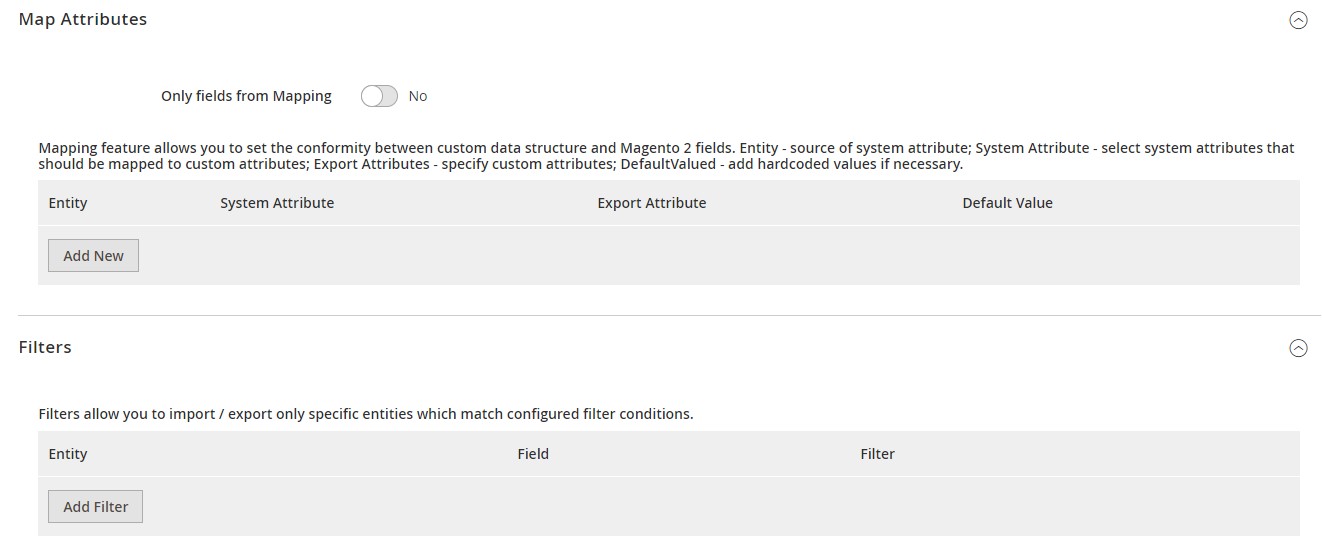
To start the export process, hit “Save & Run” in the top right corner of the screen. For further information on how to export categories in Magento 2, follow the link below and contact our support:
Get Improved Import & Export Magento 2 Extension
Improved Import & Export Features

The following part of the article is dedicated to the features of the Improved Import & Export extension that simplify category import and export to Magento 2 along with other data transfers. Below, we describe what makes the module unique. It provides several ways of moving categories and the related data to and from your e-commerce website, including a direct connection between the two systems. As a store administrator, you can manage all integrations right in the backend interface, automating all import and export processes. Let’s start the exploration describing this opportunity.
Automated Import & Export Processes
The Improved Import & Export Magento 2 extension provides two ways of automatic category data import and export: schedules and event-based triggers. We describe both mechanisms below. Let’s take a look at how schedules work.
Schedules
With the Improved Import & Export Magento 2 extension, you can use the default cron syntax to create import/export schedules moving Magento 2 entities to/from a remote platform. The module provides the ability to specify any custom intervals so that you can create a schedule suitable for your specific business needs. At the same time, you can select one of the predefined intervals, which are also fully customizable, create import and export profiles that have no schedules, or launch every profile manually.

Events
Event-based triggers represent the second way of automating data transfers in Magento 2. And it is more suitable for the category data transfers. The Improved Import & Export extension enables real-time updates. Create and configure a trigger specifying conditions to synchronize two systems right after a specific action takes place.
With event-based triggers, you can select an event that launches the category data import or export. The plugin considers the specified event a trigger and starts the transfer. Thus, the data is provided to a remote platform in real-time. For instance, you can configure the plugin to provide an external system with a category data update right after the new changes to the existing category tree are applied.
The same approach can be applied to import processes as well. For further information, check this article: How to Run Magento 2 Import or Export After Specific System Event or Process.
Advanced Mapping Features
Below, you can find another essential aspect of the Improved Import & Export Magento 2 extension – the ability to solve problems caused by different attribute standards. Our module provides several exclusive mapping features that dramatically simplify both import and export procedures.
It eliminates the necessity to edit attributes and their values manually in a data file. Besides, our extension offers handy tools for matching attribute values and even categories as well as generating missing elements of a data file right during the import. Once configured, a mapping scheme is saved and utilized for further updates so that you can automate categories import/export entirely.
Mapping Presets
With the Improved Import & Export Magento 2 extension, you get a very straightforward way of matching external attributes to ones used internally – mapping presets. Predefined mapping schemes provide the ability to implement attribute matching in a few clicks. While configuring a new job, choose a suitable preset and let the Improved Import & Export Magento 2 extension do all the work for you.
Instead of figuring out what third-party attributes are utilized in your file with categories, you let our module analyze the input data and match all third-party designations to the internal ones. Any manual interactions with data files are eliminated. Here is how everything happens in the admin:

Matching Interface
If there is no preset suitable for your integration or you want to make an import/export file suitable for third-party requirements manually, utilize the matching interface of the Improved Import & Export Magento 2 extension. It lets you map attributes in the Magento 2 backend. The procedure is fast and intuitive: select an entity, choose a system attribute, and specify the corresponding external one in front of it as shown below:
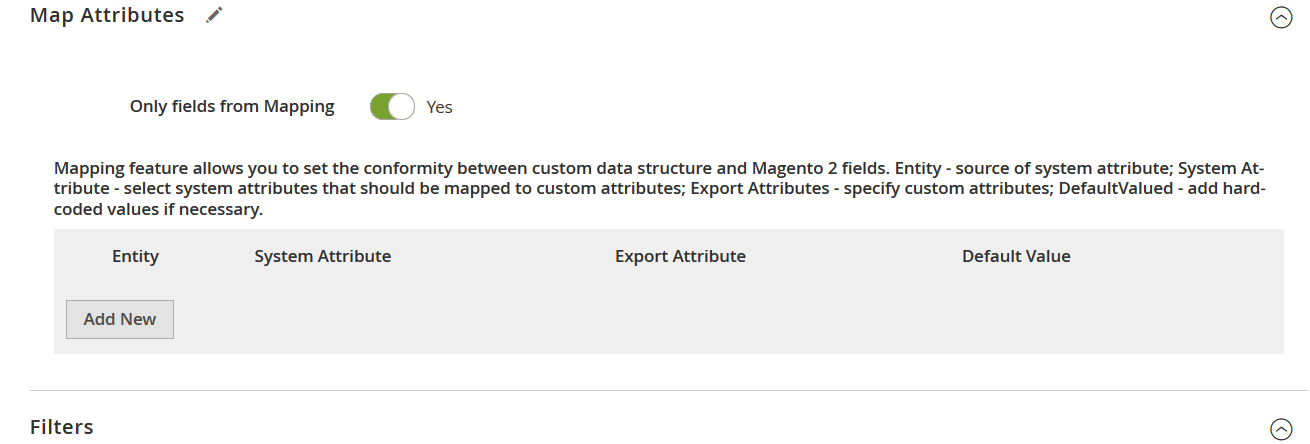
As for the “Default Value” column, it lets you specify hardcoded (default) attribute values to all items that use the appropriate attribute.
Filters
Now, when you know how to map attributes and use hardcoded values, we’d like to describe another feature that lets you export Magento 2 entities more easily – filters. Follow these steps to master the tool:
- Click the ‘Add Filter’ button;
- Select an entity;
- Select a system attribute that will be used as a basis of a new filter;
- Specify parameters applied for filtering;
- Repeat the previous steps to create more filters.
Note that parameters applied for filtering vary, depending on the chosen attribute. Everything is intuitive and straightforward:

Attribute Values Mapping
And you can match attribute values with the Improved Import & Export Magento 2 extension as well. Since incorrect designations may prevent import processes or may not be accepted by third-party systems, it is essential to replace all unsupported data. While the default Magento tools don’t let you do that, our plugin offers an interface similar to the one we’ve just described above. Choose a third-party value and specify a corresponding internal one in front of it while importing categories to Magento 2. Repeat matching until no external designations are left. For further information, read this article: Attribute Values Mapping.
Attribute Values Editing
You can also edit attribute values in bulk with the help of the Improved Import & Export Magento 2 module. The extension provides the following rules that can be combined and applied to multiple values simultaneously:
- Add a prefix to multiple attribute values;
- Add a suffix to numerous attribute values;
- Split various attribute values;
- Merge multiple attribute values.
Note that the module provides the ability to create various conditions to increase the efficiency of editing. For further information, check this article: How to Modify Attribute Values During Import and Export in Magento 2.
Category Mapping
Another feature of the Improved Import & Export extension that simplifies the way you work with categories while transferring data to Magento 2 is category mapping. It lets you import products without editing third-party categories manually or applying changes after the update is transferred.
Our module lets you match external product categories to ones used internally in a fast and intuitive manner. You apply all the changes in a single place of your admin. The process looks as follows:

It is also possible to create new categories on the fly. The Improved Import & Export Magento 2 module lets you select a parent category and specify a new one related to it. Both features are described here: Category Mapping.
Attributes On The Fly
Another feature that dramatically simplifies import processes is the ability to create attributes on the fly. If an update file doesn’t include all the necessary data, our plugin allows using the following general form to specify all parameters used to get all missing attributes automatically:
Attribute|attribute_property_name:attribute_property_value|…
The procedure is described in more detail here: Product attributes import.
Extended Connectivity Options
As mentioned above, the Improved Import & Export Magento 2 extension allows extending the default opportunities related to data transfers. It not only supports remote servers but also offers a bunch of other extended connectivity options.
Multiple File Standards
CSV files are the only standard supported by Magento, and you are no longer limited to it. The Improved Import & Export Magento 2 extension provides the ability to use XML, JSON, ODS, and Excel files instead. Thus, the necessity to convert data files into CSV and vice versa is eliminated!
Multiple File Sources
And the vital improvement that enables all kinds of import/export is support for multiple sources. The Improved Import & Export Magento 2 extension lets you leverage several different connection options:
- FTP/SFTP. Transfer data files using a local or remote server.
- Dropbox. Use a Dropbox account to establish a connection between the two systems. Alternatively, you can rely on Box, OneDrive, Google Drive, iCloud, and Amazon Drive.
- URL. A direct URL can be used to import a data file as well.
If your file with categories is compressed, there is no need to extract it before the import. The Improved Import & Export Magento 2 extension will do everything for you!
Alternative Ways of Import & Export
Since the alternative ways of import and export are not represented in Magento 2 by default, you can establish direct API connections with the Improved Import & Export extension only. It provides the ability to leverage REST for the Magento 2 synchronization with external systems. However, the module also relies on other APIs if necessary. For instance, it works with SOAP and GraphQL. Note that all API connections support other extension’s features.
Google Sheets, Office 365 Excel, and Zoho Sheet are the supported intermediary services. Use them to transfer products to Magento 2. The following image shows how to import data to Magento 2 from Google Sheets:

And of course, the Improved Import & Export extension opens completely new possibilities with support for WSDL and WADL.
The video below displays other details of our extension:
Final Words
Now, you know how to manage categories in Magento 2. Creating and editing them is a very straightforward procedure. And if you use Improved Import & Export for transfers, import and export processes become a piece of cake. For further possibilities of our extension, follow the link below and contact our support:
Get Improved Import & Export Magento 2 Extension

